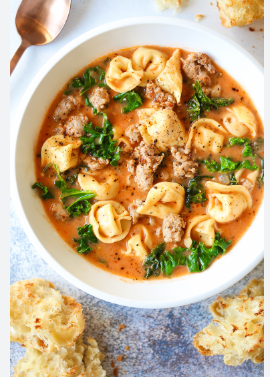Topic: Foreign food | Bài mẫu IELTS Speaking Part 1 + 2 + 3
Bài mẫu IELTS Speaking part 1 topic: Foreign food
1. Have you ever tried foreign food?
I surely have. Living in the city, I’m blessed with having almost everything on my doorstep and there are plenty of food choices, including local and international cuisines. Pizza, dumplings and ramen are my favorites when it comes to foreign dishes. Though I don’t eat them on a daily basis, a little change of taste on the weekends is always a good idea.
- On one’s doorstep (adv): ngay trước thềm nhà
- Cuisine (n): ẩm thực
2. Do you like to try new food?
You can call me an avid eater, because I am passionate about food and have tried a wide variety of foods before. When coming to a new city or country, the first thing I’d like to do is to taste the mouth-watering local food. I’m also into preparing dishes myself so I often watch cooking shows for new recipe recommendations.
- Avid eater (n): người đam mê ẩm thực
- Mouth-watering (adj): ngon (khiến chảy nước miếng)
- Recipe (n): công thức nấu ăn
3. What kind of new food have you tried recently?
Last weekend I wanted to spice up my family dinner so I took my parents out for some Italian food. It was a newly-opened restaurant downtown so it took a while to get there. Besides some common Italian dishes like pizza or spaghetti, I got to try lasagna for the first time. What made it different was its non-dairy recipe, so my parents didn’t have to worry about being lactose intolerant.
- Spice up (v): khuấy động
- Non-dairy (adj): không làm từ sữa
- Lactose intolerant (adj): không dung nạp lactose
4. What kind of foreign foods is popular in your country?
Well, regarding the most-eaten foreign foods, I guess American fast food has gained popularity for many years, not only in my country but also around the globe. I mean everyone has at least tried burgers or French fries, as they are a dime a dozen nowadays. However, as an Asian country, we also show a keen interest in Chinese, Japanese and Korean dishes. They can cater to the taste of most Vietnamese people, due to the resemblance in taste, colors and fragrances.
- A dime a dozen: rất rẻ, rất phổ biến
- Resemblance (n): sự tương đồng
- Fragrance (n): mùi hương
Bài mẫu IELTS Speaking part 2 topic Foreign food
Đề bài Describe a foreign food you would like to try
Describe a foreign food you would like to try.
You should say:
- what it is
- how you know about this food
- where it is mostly prepared and consumed
and explain why you want to try this foreign food.
Bài mẫu

I would like to share with you about an Italian dish that I saw on a cooking show last week. If my memory serves me right, the dish was called Creamy Tortellini soup and as a Italian food fan, I really want to give it a try.
There was an Italian chef giving instructions during the show, and he sailed me through the process of making the soup. Regarding the ingredients, Italian sausage and Tortellini pasta were the must-haves, and they were served with chicken bone broth. But different from the original Tortellini, full-fat heavy cream must be included to give this soup its signature creamy texture. It was then flavored with garlic, onion, salt and tomato sauce for a perfect combination of taste and fragrance. He also added some spinach and kale for vitamins and minerals, as well as to minimize the rich taste of heavy cream.
The way I see it, refrigerator staple ingredients are what make this dish hassle-free and perfect for busy weeknight dinners. It’s also a great option for when I have an intense pasta craving but don’t want to fill up on a heavy serving of carbs. I have a soft spot for creamy sensations as they often make me feel extremely satisfied while eating. The creamy broth looked decadent but light enough so I wouldn’t give me gas after eating. Looking at the mouth-watering Italian dish, I just couldn’t help myself and I wish I could have a chance to visit an Italian restaurant to taste it for the first time.
Từ vựng
- If my memory serves me right: Nếu tôi nhớ không lầm
- Sailed s.o through s.th: hướng dẫn ai đó làm gì
- Must-have (n): thứ bắt buộc phải có
- Broth (n): nước dùng
- Refrigerator staple ingredient (n): nguyên liệu cơ bản trong tủ lạnh
- Hassle-free (adj): không tốn nhiều công sức
- Have craving (v): thèm ăn
- Have a soft spot for s.th: Yêu thích cái gì
- Decadent (adj): giàu chất béo, nhiều calories
- Give s.o gas: khiến ai bị đầy bụng
- Mouth-watering (adj): ngon miệng
Bài mẫu IELTS Speaking part 3 topic Foreign food
1. How healthy is your country’s food?
Vietnamese food is delicious and it is often cited as one of the healthiest cuisines in the world. Low in fat, gluten-free and jam-packed with vitamins and minerals, Vietnamese signature – Phở – is the perfect food to boost your immune system, aid weight loss and give you energy for the whole day. Most Vietnamese foods are low in calories and fat since it’s flavored with herbs and spices rather than oil and dairy. Our salads and soups are also full of Vitamins E and A, thanks to plenty of vegetables added.
- Gluten-free (adj): không chứa gluten
- Jam-packed (adj): tràn ngập
- Immune system (n): hệ miễn dịch
- Herb (n): rau thơm
- Spice (n): gia vị
2. Why do you think different cultures have different table manners?
Well, I think it all goes back to tradition and different ways of showing respect. Some widely-accepted eating habits in one country are considered inappropriate in others and vice versa. Take Vietnam and China as an example, we have, you know, an unspoken rule among households, which is leaving the very last piece of food untouched out of courtesy.
Taking the last item of food off the tray suggests that the food provided is insufficient, and that it would make us look greedy because no one should have more than their share, especially when there are many people eating together. This, however, is sometimes considered rude in Western cultures, where leaving food on your plate is a sign of disrespect to the hosts and the food itself. The way I see it, these eating habit variations take place due to different cultures and mindsets.
- Widely-accepted (adj): được công nhận rộng rãi
- Inappropriate (adj): không phù hợp
- Vice versa (adv): ngược lại
- Courtesy (n): phép lịch sự
- Insufficient (adj): không đủ
- Greedy (adj): tham lam
3. How may eating habits change in coming decades?
As people are becoming more health-conscious and are introduced to healthy eating, hopefully some unhealthy foods might disappear entirely. In 10 or 20 years time, I expect greasy foods and sugary items will gradually be supplanted by fish, vegetables and high fibre carbohydrates. People are increasingly paying attention to their physical health conditions, so their eating habits would definitely change for the better.
- Health-conscious (adj): có ý thức bảo vệ sức khoẻ
- Supplant (v): thay thế
- Fibre carbohydrates (n): tinh bột giàu chất xơ
4. What is one aspect of a foreign tradition you like about their eating habits? Why?
I have to say that all countries’ eating habits reveal some of their traditional aspects and they help me to fully understand and appreciate the cultural diversity around the world. But if I have to name one particular tradition, it would be Japanese food’s appearance. They eat in small portions and add colorful, seasonal vegetables to make for a visually appealing and healthy plate. The small portions help keep calories in check, while veggies provide a range of healthy vitamins and minerals. I try to apply this rule when having breakfast, lunch and dinner, and it’s extremely helpful in weight maintenance.
- Reveal (v): tiết lộ
- Cultural diversity (n): sự đa dạng văn hoá
- Weight maintenance (n): sự duy trì cân nặng
Xem thêm các tài liệu Tiếng Anh hay, chi tiết khác:
TOP Việc làm "HOT" dành cho sinh viên:




